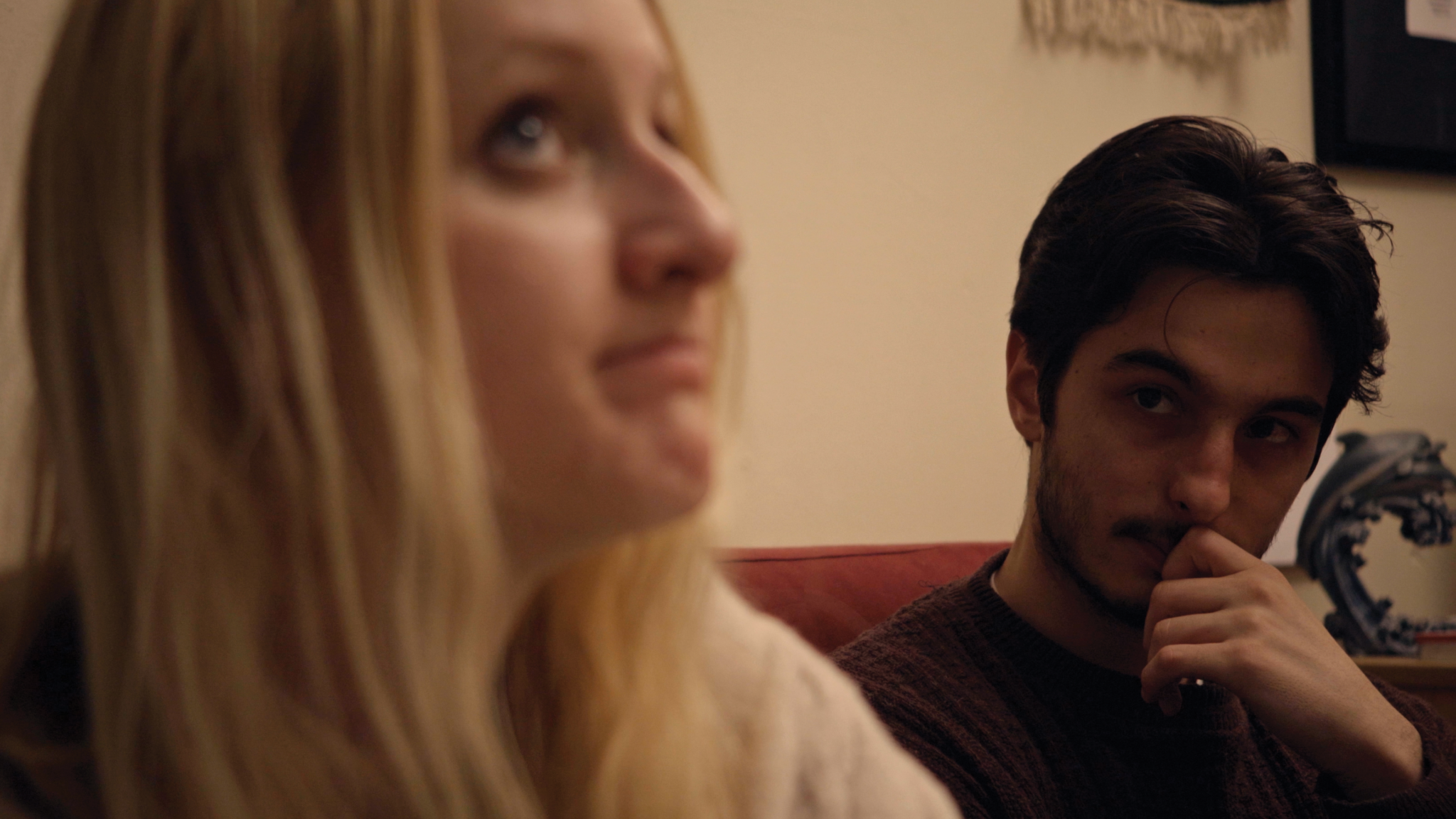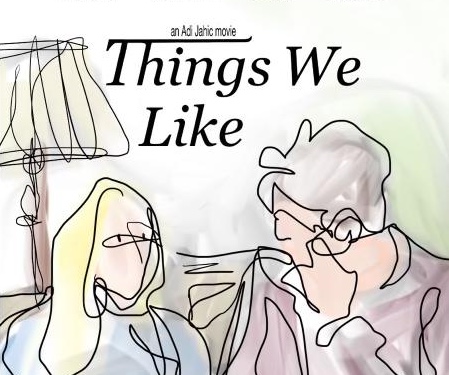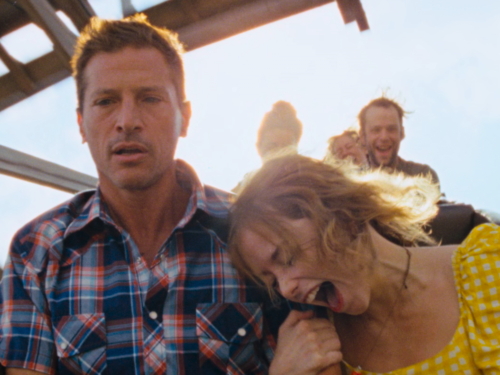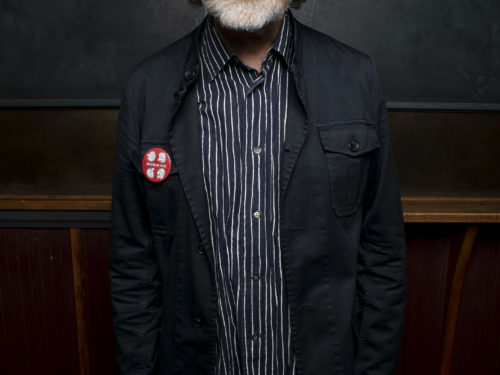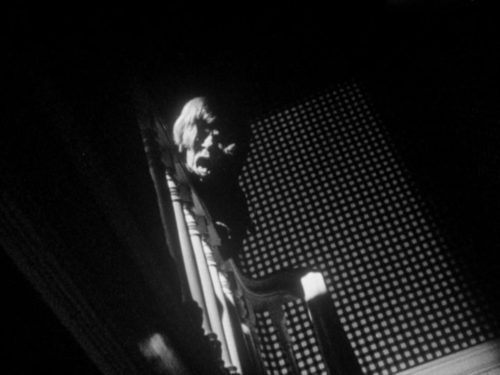Produced during the pandemic and shot largely over weekends, Things We Like is the sensitive and promising debut feature from Adi Jahić. The film follows 25-year-old Georgia (Emma Kuhlman) as she drives from Vermont to Boston to meet Peter (Jahić), a young man she knows exclusively through interacting on the internet. Georgia has been stuck working a cubicle job for years. She rents a room from an older couple in the suburbs and desires some form of change. With the opportunity to meet Peter in person, she hits the road without a particular plan in mind. Peter, on the other hand, has a sense of direction as an aspiring musician. But with little success to show for his efforts, his ambition has stalled and left him in an uncertain place. When Georgia arrives, their night together develops in ways neither of them saw coming.
While walking in the footsteps of films like Andrew Bujalski’s Funny Ha Ha (2002), Mike Gibisser’s Finally, Lillian and Dan (2008), and Frank V. Ross’ Audrey the Trainwreck (2010), Jahić doesn’t follow any influence too closely and shows confidence by doing his own thing. Things We Like takes great care in easing into the drama of Georgia’s and Peter’s evening together. Their interactions and conversations flow with skillful, jagged rhythms. Jahić focuses on the hesitations and what lurks beneath his characters’ stammers as they try to gauge how much to say and what to hide from their companion. They fumble for words and miss the meanings of each other’s jokes, all while grappling with the hopes and disappointments that have guided them to the present moment.
We spoke with Jahić about the making of Things We Like and what he learned while creating his first feature in true micro-budget fashion.
Stream Things We Like on Vimeo below
Split Tooth Media: Can you tell me a bit about yourself? Where did you grow up and what led you to filmmaking?
Adi Jahić: I grew up in the suburbs of Los Angeles. Both of my parents are Bosnian refugees and they settled there pretty randomly. I was born here in the US. In high school, I didn’t know what I wanted to do. But it wasn’t in an aimless sort of way, but more like every three months I felt like I knew exactly what it was that I wanted to do and then would realize three months later that I was entirely wrong. But I knew there were certain things I liked, like photography and writing. Then I took a film class. Film was different though, because I wasn’t in love with it immediately. I wasn’t like, ‘This is what I want to do with my life.’ I slowly got to that by actually making stuff. I remember I had a movie play in our high school film festival. Everyone who made something in the class got something to play there, and it was a pretty piece of shit movie. But the crowd loved it and it was a nice feeling.
When I went to college I ended up doing film and economics. I realized that I hated the film industry and wanted to do stuff on my own. I liked movies, but I liked making them more than I liked watching them. Then I stumbled upon some independent films that were doing really interesting things and took Ray Carney’s class and really fell in love with the type of films he was showing. Those movies showed me that I could do it, and that’s kind of what led to Things We Like. I asked some friends to help out and I knew a lot of actors from school, like Emma Kuhlman, the lead actress who plays Georgia.
It’s funny that your interest in film came primarily through making them rather than watching them. So many filmmakers these days seem more interested in quoting shots from their favorite films and name checking their influences than in creating their own images and styles. Thing We Like was refreshing because it didn’t feel referential in that way. That being said, I am curious which films were instrumental in guiding you along, and how do you feel their influence shows in your work or process?
I definitely try not to pull anything too directly from other films or filmmakers. While I’m working on a film — from writing to editing – I don’t watch anything. I used to, but I found if I watched a movie and then wrote the next day, I usually ended up writing a shitty version of the movie I had just watched. (Laughs)
But the movie that really set me on to making Things We Like was Tom Noonan’s What Happened Was… (1994). It’s one of the most under-appreciated movies. I watched it and it was like, ‘Oh, this is just two people in an apartment.’ I’ve always written stuff like that anyway — not exactly like What Happened Was; it’s impossible to write like Noonan — but stuff with few locations and small casts. Then I was told that Noonan made up a bunch of pseudonyms for himself to put into the credits so that people wouldn’t know he did almost everything on the film. That movie really made making a film seem doable for me.
Read more about Tom Noonan’s What Happened Was… (1994)
I then realized that a lot of bad feature films say the same amount of things that they could say in a 10-minute short, and that a good feature film is saying a short film’s worth of things every 10 minutes. So I really had to think harder about what I wanted to say to justify a feature length film. You have to use the extra time you have to go deeper. What Happened Was showed that I could do it and gave me some tricks for how to build it all within one location and keep a sense of movement while changing the meanings over time. So What Happened Was was very influential, as well as films by Frank V. Ross, Andrew Bujalski, Joe Swanberg, and Maren Ade.
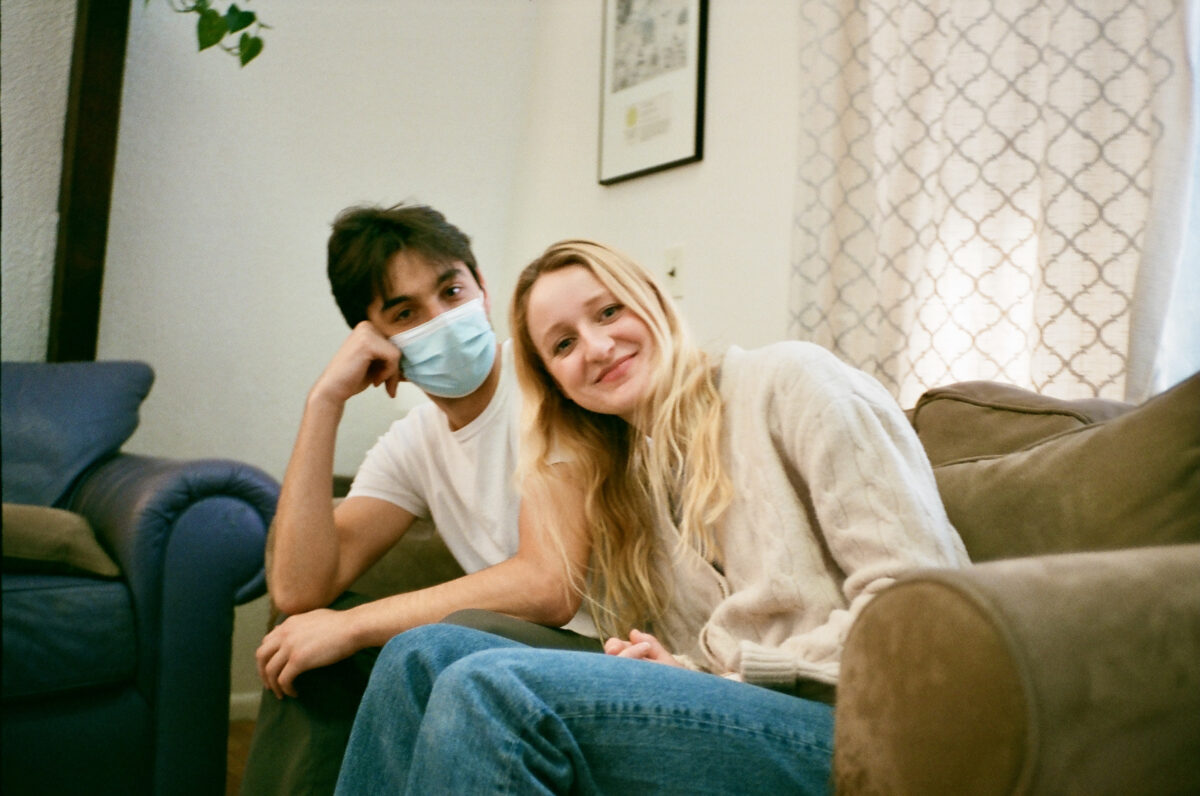
How did you approach the writing of the film? Were there many drafts and how close is the final film to what was written on the page?
The first edit of the film was three hours long. But in general, the parts that made it into the final cut of the film match closely with what was written. There were a ton of drafts. I initially wrote the film over three or four nights and then spent almost a year editing. The drafts then got shorter and shorter. I would add things throughout the writing process, but I did most of the structuring beforehand.
A lot of the film’s drama builds from the venting of frustrations suffered by Georgia, who has worked a cubicle job for years, and your character, Peter, a musician suffering a creative block. Did you find that you were channeling any of your own personal struggles into the film as you were developing it?
All the characters have little bits of me, or are people I fear becoming, like some of the older characters that Georgia meets at the beginning of the film. If I’m being honest, they are people I fear I already am. I think Peter is in some ways a bit like me. At one point, Peter says something that I actually said to my high school film teacher. The main goal was to create Peter and Georgia, not as opposites of each other, but so that they have the exact same problem in opposite ways. And it kind of worked out that I could use some of my own frustrations to build the characters.
Listen to Jahić on the Split Picks podcast:
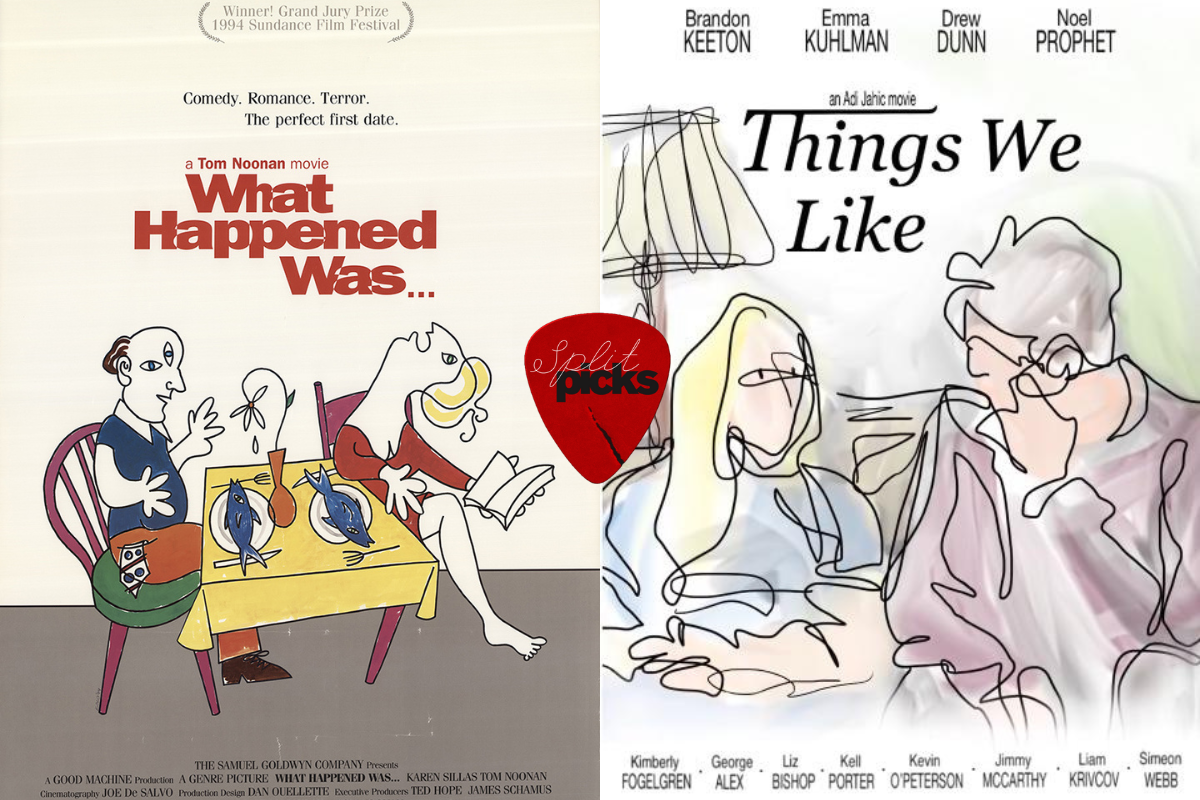
How did you assemble this cast? Were there any people that you wrote specifically for? Did you do casting?
I did casting, but I wrote Georgia for Emma Kuhlman, who is the best actress I’ve ever worked with. The rest was done through Backstage and watching hours and hours of tapes and auditioning people. Most of the older characters were played by people who did other things for most of their lives and got to a point where they were like, ‘I want to try acting.’ They were also so helpful and supportive in so many ways. Some helped fund the film and others reached out to friends who worked in film who assisted in various ways. I was very lucky to work with this cast and crew.
But I don’t really act. Playing Peter was the first acting I have done since, like, middle school theater. I auditioned a few people but no one felt exactly right for the role. I actually asked Frank Ross about it before I took the role myself. Frank talks with amazing confidence, which is something I’ve always admired about him. He was like, ‘If you can play any character in your movie, and you know you can do it, then you should do it.’ And I was like, ‘Are you sure? I’ve never really acted before.’ And he said, ‘Do it.’ Then I did an audition for our production team and they were like, ‘Eh, yeah, sure, you can do it.’ (Laughs)
Many viewers and critics tend to think of mumblecore style filmmaking as something almost thoughtless and thrown together, when in reality, that type of naturalism is often the hardest thing to capture onscreen. How did you and your actors prepare for your roles? Was there much time for rehearsals together?
We filmed during COVID, so we did tons of Zoom meetings. We had several hours of rehearsal for every scene but Zoom wasn’t the most effective way to rehearse. It’s hard to do it with people talking over each other. We did a couple in-person, but mostly, what I tried to do was have the actors really know their lines, and then when we got to the set, I would try to make things harder for them in order to get more natural reactions while shooting. When I was acting, especially in that long dinner scene, it was pretty much by the script. But I would move lines around here or there to throw in some changes.
I think that to some extent naturalism is reflective of how you are filming. We had a small camera and there weren’t tons of lights around. It was just a very simple set and people respond to that when they are performing. But I have to praise the actors because I really didn’t have to do much. They really killed it. Sometimes when shooting, I was like, ‘Am I even directing right now? They are so well prepared!’ (Laughs)
Some of these strategies for working with actors are not things I would expect to hear from a first-time director.
I’ve read a lot of books about John Cassavetes, which has been my greatest directing school. I’m a little too shy to do some of the things Cassavetes would do when filming, but I think some of my actors would appreciate that. (Laughs)
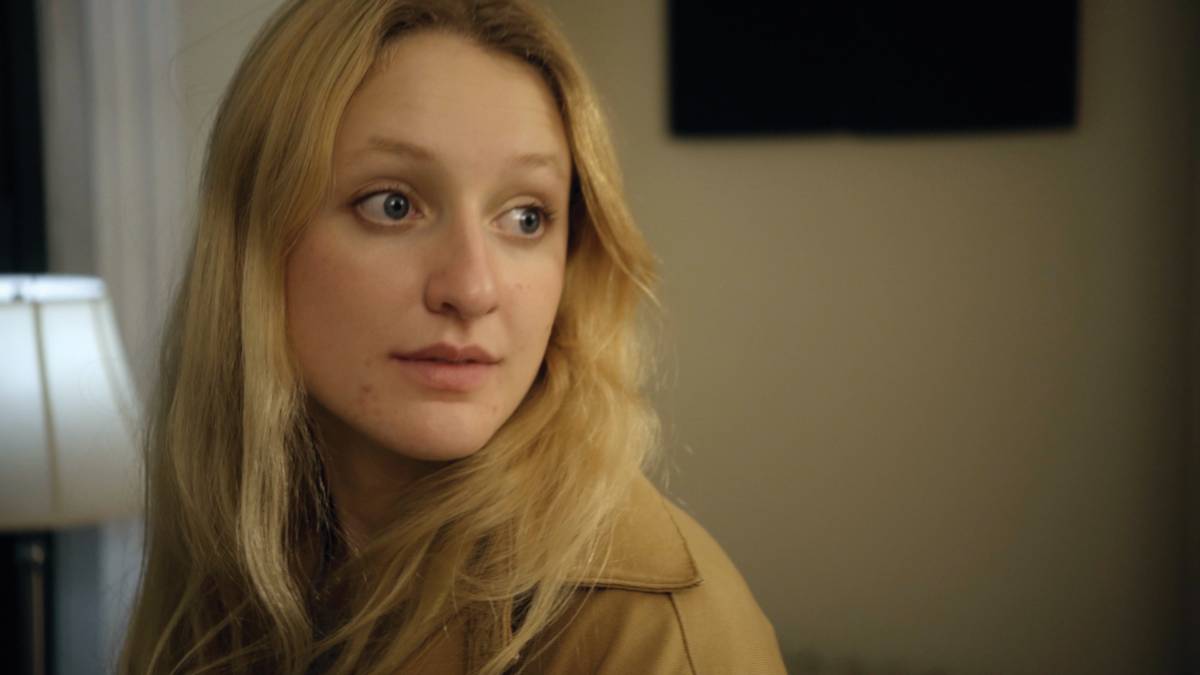
What were some of the specific things you learned about working with actors?
That there is no right way of doing it. The things you learn in film school about the “proper” ways of directing don’t always work. If I give two different people the same note, they will each do it differently. Some people need notes because they work better that way. Then some people never need them. Actors often want active notes, like ‘do this instead.’ But a lot of times those notes can become a crutch.
I’m also not a big fan of how a lot of actors are taught to act. They are often taught to make things bigger than they need to be. But they are also told to be so sure of their emotions. I tried my best to not be clear about what the emotion was for each scene. I think a lot of actors go into a scene and think, ‘OK, this is the emotion so I’m going to put it in here and that’s the scene.’ But there is a shape to each scene and things happening within it where if you are really there in the scene, the emotions will just come. If you pre-determine the emotions you’re gonna put into the scene it doesn’t feel the same.
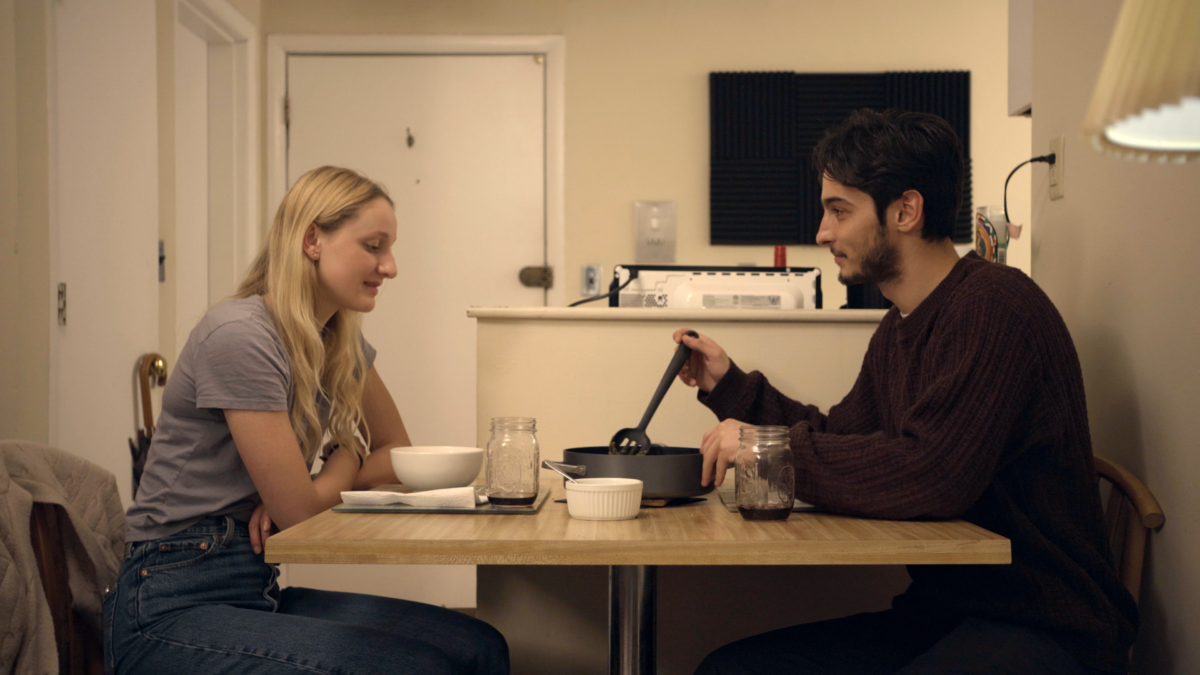
I was impressed by the dinner scene between Georgia and Peter. It covers a wide range of tones and pushes the characters into personal territory in a very sneaky way. It also covers a lot of ground in catching us up with who they are and where they’ve been without ever feeling like an exposition dump. What were some of the crucial elements you focused on in staging that scene?
Honestly, that scene is carried by Emma’s performance and the writing. I do regret how I shot that scene. Although, I don’t know what I would’ve done differently. That scene also took the most time to write and edit.
I think exposition is bad only if the purpose of the exposition is exposition. But if you use it for something else, it can be used in a much more meaningful way. When you are talking to somebody, especially someone you are unfamiliar with, it’s natural to talk about things that happened to you in the past. It’s kind of where we all default to. So for Georgia’s and Peter’s dinner, I was trying to shape that scene in a way that would draw them closer, then really carefully pull them apart, but in ways that the attempts to get closer are the things that pull them apart. I tried to pull out specific things from their lives that they could mention that would elicit certain types of responses from the other person, and also from themselves. They are trying to say things in a way that the other person will respond to well, then it doesn’t work. And since they are meeting for the first time in person, they are very aware of each other’s responses, which is what makes it interesting.
You begin and end the film by showing Georgia interacting in group situations. You open the film with the older couple that Georgia lives with inviting her to join them and some friends for lunch. The encounter is sort of strained and awkward. The final sequence of the film has Georgia meeting a group of truck drivers at a gas station and being invited to sing and eat with them. Why did you decide to structure the film with these bookend sequences?
With the first scene, I wanted Georgia to interact with a group of people who are more concerned with creating an image of success and happiness. With the last scene, I wanted to create the opposite. It feels like a completely different group, very genuine. But when you get closer, they have their own problems in regards to connecting with people. Before I started writing the film, all of those three scenes — the older couple’s house, Georgia’s night with Peter, and the truck stop — were going to be the same length. But then as I started writing it, the one in the middle with Peter grew. I realized it had more breadth. It felt like it needed more time than the other ones did. Then, I had the thought of cutting the other two scenes, so at one point in the edit, it was just the middle scene. But that wasn’t right. It was missing this different understanding of Georgia that was developed in the first part.
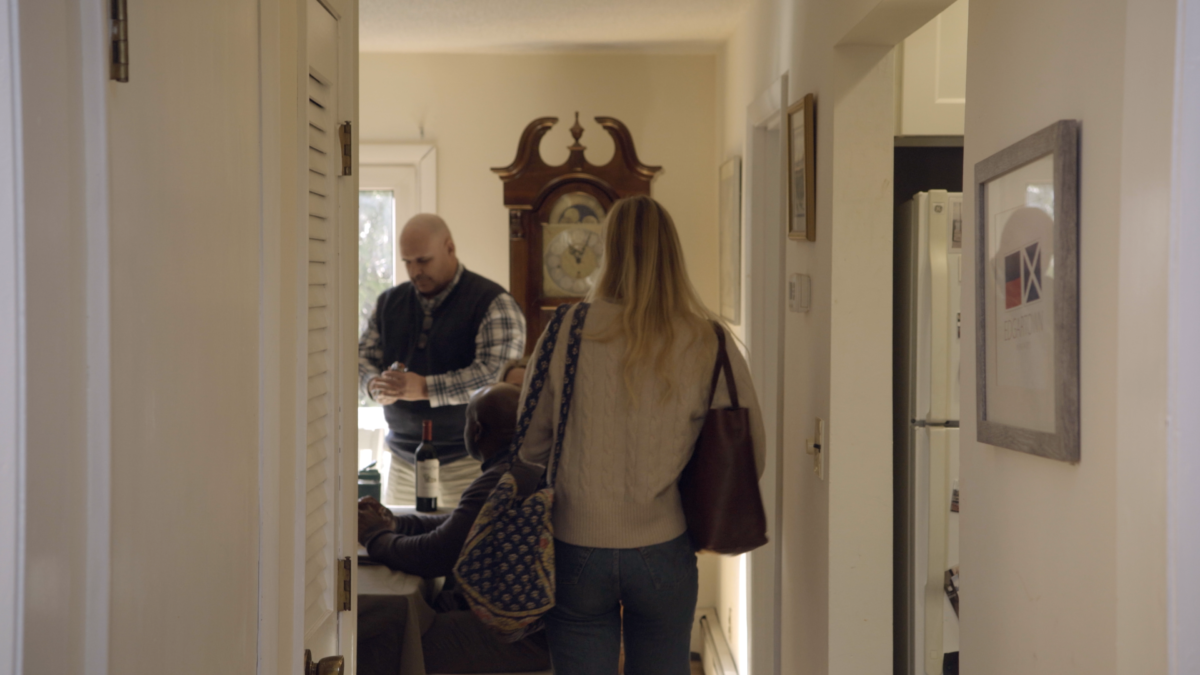
In that version of the edit, did you keep anything from before Georgia leaves to meet Peter?
It basically started with her driving after she leaves the group and it changed the whole shape of the movie. The way things happen and the interactions that take place in the middle and final scenes didn’t have the same meaning because you didn’t see her with the older couple and their friends.
Also, in the middle of the dinner scene, there’s a hard cut. Originally that cut was put there because there were going to be these vignettes featuring other characters placed throughout the film. Cutting those was probably the biggest decision I made in editing the film. They were the reason the first cut was three hours long. I’m going to make those vignettes into little short films.
The truck stop scene, since it involves so much movement and physical interaction, feels like it would have been particularly hard to rehearse over Zoom. Do you think that affected how the scene played out or did opportunities open up for you and the actors once you got on location?
That was the scene we rehearsed the least over Zoom, because we did one or two and I realized it wasn’t helping us at all. Then we did an in-person rehearsal two days before shooting, which one of the actors didn’t make because he wasn’t feeling well. It turned out he had COVID so I had to call up another actor, Liam Krivcov, who was going to be in one of the vignettes, and offered him the bigger part. He’s a great actor. He learned as many lines as he could and then we just shot it. Pretty much everything for that scene though was done on the spot. With the actors, like Drew Dunn, a comedian, and Noel Prophet, who is an amazing musician, I would encourage them to try new things, but 98 percent of the time I would have them stick to the script. When I watch that scene, it feels more alive than the rest of the movie; it’s a heartier scene with more people. And a lot of that was the location — despite the lights being a disgusting color — because it gave them so much space to move. And because there was so much going on in the scene they weren’t really thinking about what they were doing. In the beginning especially, most of the lines sounded better when the actors screwed them up a bit.
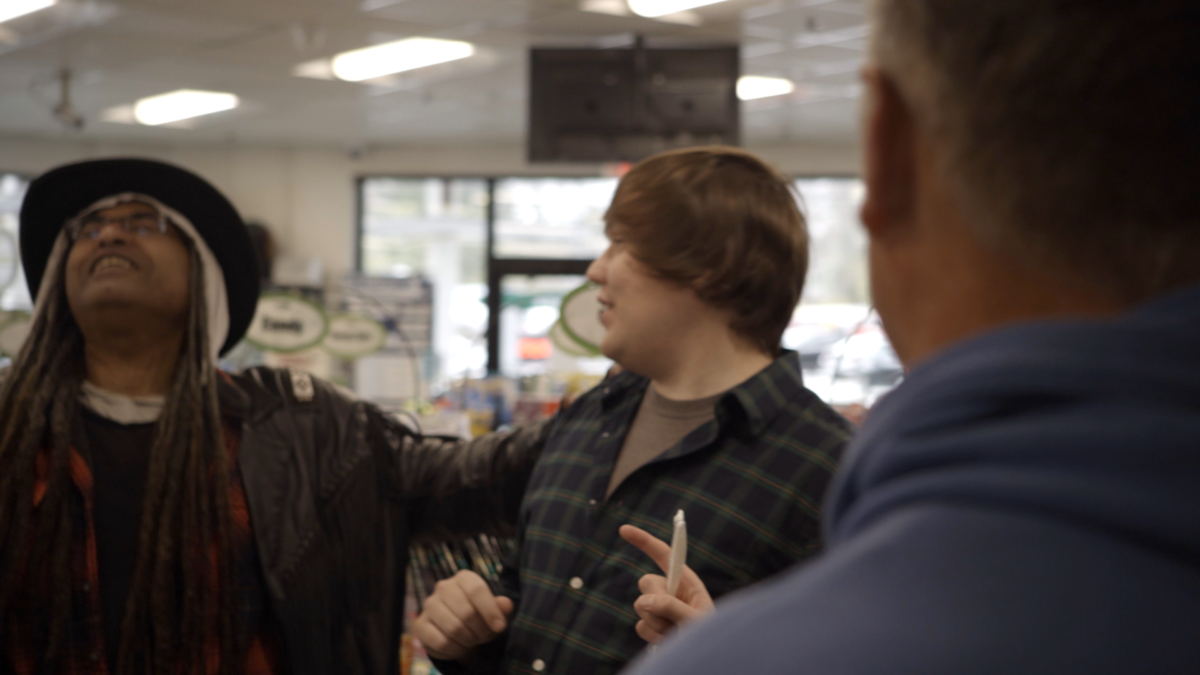
What were some of the biggest struggles you faced as a very small, micro-budget production?
Working on Things We Like, especially with COVID, everyday was like, ‘Are we even going to be able to shoot today? And if we can’t, what do we do?’ The biggest struggles involved locations, equipment, and making sure we had people who could help out everyday. We shot the film over weekends. Unfortunately, sound was a big struggle and it shows every now and then in the finished film, which is a bummer. But we did the best we could. I couldn’t have done it without the camera team and producing teams, Andres Gedaly, Sydney Clark, Sean Doucette, and Tessa Richardson, who all really killed it.
There were many times I was sitting there going, ‘I don’t know if this is going to work out. Is this even going to cut together?’ I wanted to make every moment count and encourage everyone else, but in the back of my head I wasn’t sure if the movie was just going to be some shit that I asked a bunch of people’s help for that I failed to do something good with, you know? That was a weird feeling. But once I put it together, even in its super long cut, it was like, ‘Oh, it is a movie.’ But that was something I never thought I would doubt. I had confidence that I knew the craft of filmmaking well enough for things to cut together and all that, but it was so much different doing this than a class assignment that is only 15 minutes long.
With film classes often being staged in very controlled environments, what were some of the things you learned on the fly while making your debut feature film out in the wild?
The biggest thing I learned was that I didn’t actually know what I was trying to say with the film until I started making it. In Ray Carney’s class, he told us “expression precedes consciousness.” That’s more true than ever when you are making a movie, because you have to be there doing it. You have to be forced to physically do it and talk to people about what you want before you get to any deeper level. I feel like a lot of people never make a movie because they aren’t sure what they want to say yet. But you never will unless you just go make something. When I was writing the film, I knew what I was trying to say in my writing. But once I got on set with the actors and the crew, those meanings in the script changed because there is something inherently different in the processes of writing and filmmaking.
I went into the film knowing I had a lot to learn, but I wasn’t prepared for how much that ended up being. You don’t want to be put in a position to be making up everything on the spot. You have to have a plan, and if you deviate from that plan, there has to be a reason for it. It’s important to have a shot list and all that, but I learned that you have to go in prepared and with an idea of exactly what you want to do, in order to not do it. At first I thought I would just be shooting what was on the shot list. But I threw that idea out the first day. There is virtue to planning and writing things, because you can change it. That’s the best thing about planning out every detail.
There is an interview with Joanna Hogg and Kelly Reichardt where they talk about how story operates in their work. Hogg speaks of wishing her films were driven more by story than they tend to turn out, while Reichardt describes beginning projects with a desire to break away from story, yet a linear narrative always seems to materialize through her filmmaking process. Do you relate to either of their relationships to story and narrative?
I was 19 when I wrote Things We Like. I was very much thinking, ‘I’m writing this story. I want to tell this story.’ As I was directing, I found myself more interested in adding nuances to what I had written. Editing took a year, and about five months in, I had this realization that my initial thinking and everything I had done up until that point was wrong, but what I actually had in the footage was interesting. Everything became more about the meaning of the scenes than the story. Now, when I am writing, I am thinking more about how I am putting scenes together and story is more of an afterthought. I really thought I was writing an interesting story and then I realized my goal was to make an interesting movie, which is a very different thing. I think I came out with an interesting movie.
UPDATE: Split Tooth had the honor of hosting the online premiere of Things We Like. Click the image below to watch the film and read a director’s statement from Jahić
Stay up to date with all things Split Tooth Media and follow Brett on Twitter and Letterboxd
(Split Tooth may earn a commission from purchases made through affiliate links on our site.)

